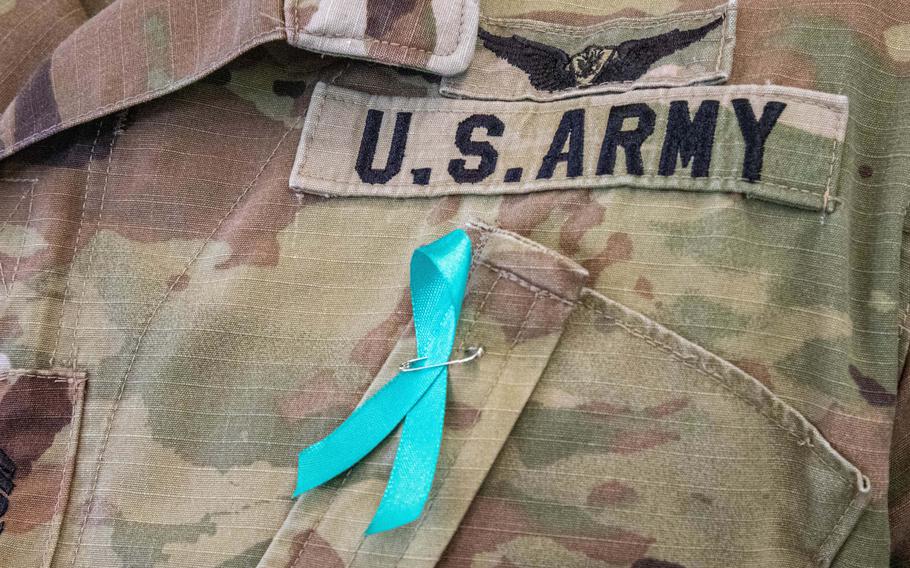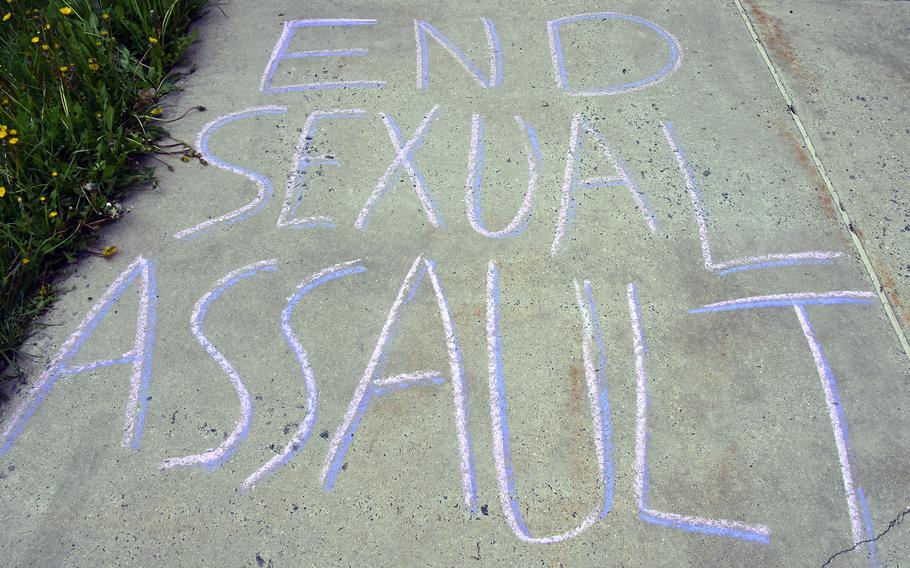
A soldier wears a teal ribbon symbolizing sexual assault awareness and prevention at Wheeler Army Airfield, Hawaii, in 2021. An Army-commissioned study released Feb. 27, 2023, recommended that commanders be briefed on how the variety of sexual assaults occurring in the Army differ from those of college campuses, despite similar demographics. (Sarah Sangster/U.S. Army)
Sexual assault prevention programs in the military rely too heavily on college date-rape scenarios that differ from the way many troops experience such attacks, according to a new study that suggests the Army must adapt prevention efforts to its own social reality.
The Rand Corp., in a U.S. Army-commissioned study released Monday, found that reported assaults by male soldiers on women were unsurprisingly the most common form of sexual violence. But the study also revealed statistically significant numbers of sexual assaults in which a man was the victim, either in hazing situations or in cases of assault by a woman.
“Some of the types of sexual assault and sexual harassment identified in this report do not closely align with popular stereotypes about victims, perpetrators, and contexts of sexual assault and sexual harassment in the Army,” the Rand report said.
In the military, sexual assault prevention programs are heavily drawn from material geared toward college students. Assault scenarios typically revolve around dating and an alcohol-infused campus life where male perpetrators target women, Rand said.
“However, such prevention programs may fail to address the unique features of sexual assault in the Army, and focusing primarily on this one type may fail to address the majority of assaults,” Rand said.

An anti-sexual assault message is written on a sidewalk at Fort Detrick, Md., in 2021. An Army-commissioned study released Feb. 27, 2023, recommended that commanders be briefed on how the variety of sexual assaults occurring in the Army differ from those of college campuses, despite similar demographics. (C.J. Lovelace/U.S. Army)
A male soldier attacking a female soldier accounts for 46% of sexual assaults, according to the study. The remaining 54% differ in important ways, the report said.
Among the differences in the Army: “a much larger fraction of assaults have male victims; are done with the intent to abuse, bully, or haze the victim; involve multiple perpetrators; do not involve alcohol; or occur in the workplace,” Rand said.
After male soldier assaults on female soldiers, the next most common type was unwanted sexual touching in the workplace at 22%, followed by bullying/hazing sexual assaults at 15% and female assaults on male soldiers at 10%.
Meanwhile, the most reported sexual harassment scenario involved men offended by sexual talk and jokes at work, at 24% of cases, according to Rand. That was followed by gender discrimination against women at 18% and harassment on duty by an individual perpetrator at 14%.
The workplace harassment scenario involving the unwanted pursuit of a woman by a man accounted for 12% of cases.
“These findings should help individual commanders increase their awareness of the different types of sexual assault and sexual harassment victims and experiences, and how those victims and experiences may apply to the soldiers under their command,” Rand said.
Taking such factors into consideration could better prepare commanders to identify risks unique to their units and adapt prevention efforts as needed, the report said.